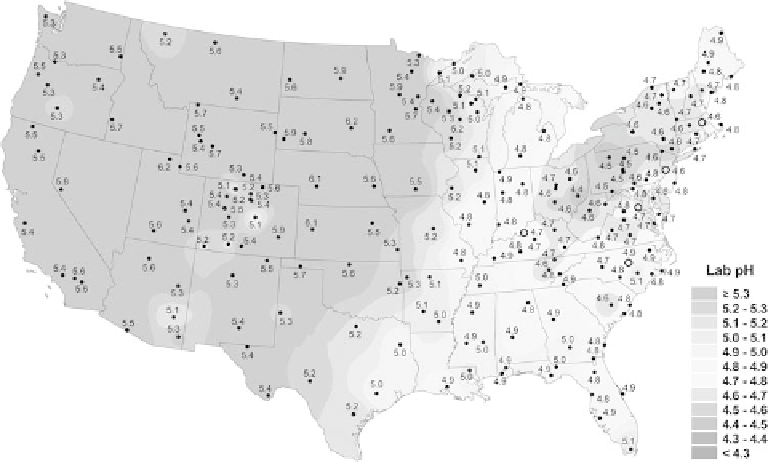Environmental Engineering Reference
In-Depth Information
Figure 10.2
Variation in severity of acid rain. (Environmental Protection Agency, 2009)
analogous to the enhancement of the normal greenhouse effect thought
to be caused by carbon dioxide and methane. The problem is world-
wide but is particularly severe in coal-burning, heavily industrialized
regions (fi gure 10.2). Northeastern North America has had an acid
rain problem for many decades because of coal-burning industries in
the American Midwest and persistent northeasterly winds. Lakes in the
Northeast and in eastern Canada can be 50 to 100 times more acidic
than unaffected lakes.
Our atmospheric sulfuric acid is carried into northeastern Canada,
and in Nova Scotia some rivers are so acidic that salmon cannot live in
them. Fortunately for both the American Northeast and eastern Canada,
there has been signifi cant progress in decreasing the release of sulfur from
industrial smokestacks in the United States. Thanks to legislation enacted
twenty years ago, sulfur emissions have dropped by more than 50
percent, but much further improvement is needed. A decline in the use
of coal in favor of alternative sources of energy is required.
Both natural vegetation and crops are affected by acid rain. The waxy
layer on the leaves that helps protect the plant from diseases is damaged.
The acid soaks into the soil and damages plant roots, causing the plant

